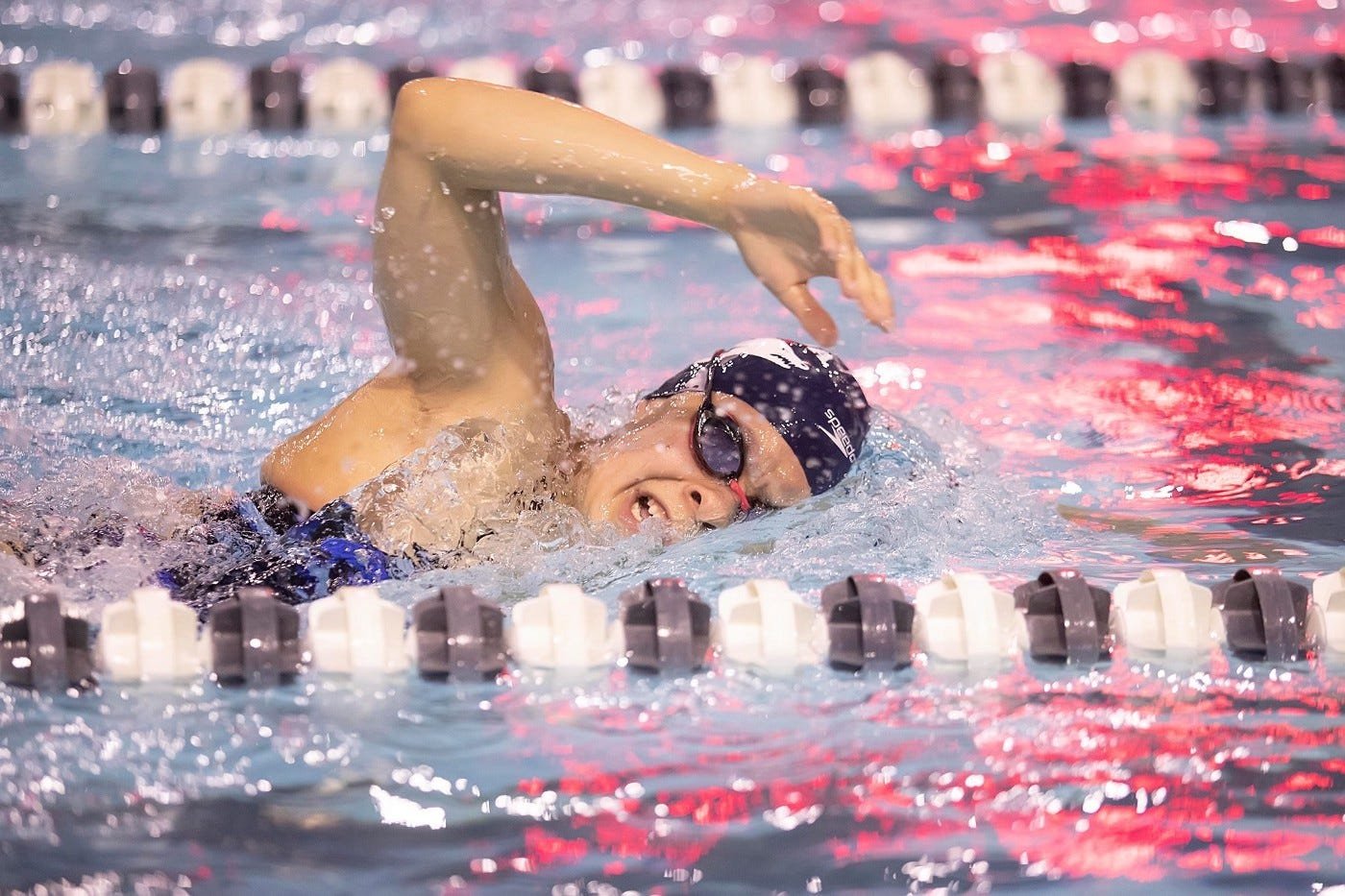Yes, swimming is often considered one of the hardest sports. It requires strength, endurance, and technique.
Many athletes find it challenging. Swimming combines physical and mental demands. Swimmers must master various strokes and breathing techniques. Every muscle in the body works hard, making it a full-body workout. The sport also requires a lot of practice and dedication.
Swimmers often train for hours each day, both in and out of the water. The mental toughness needed to push through long, intense workouts is immense. From early morning practices to strict diets, the commitment is huge. In this blog, we explore why swimming is so challenging and what makes it stand out among other sports. Dive in to learn more about this rigorous and rewarding activity.
Introduction To Swimming
Swimming is a sport that tests endurance, strength, and technique. It is a full-body workout that engages almost every muscle. Swimming also requires coordination and mental focus. Let’s dive into the fascinating world of swimming.
Brief History
Swimming dates back to prehistoric times. Early humans swam in rivers, lakes, and seas. Ancient civilizations like Egypt, Greece, and Rome embraced swimming. It was a survival skill and a recreational activity. In 1837, the first swimming competitions began in London. The sport evolved and became part of the Olympics in 1896. Today, swimming is a global sport.
Popularity And Benefits
Swimming is one of the most popular sports worldwide. Millions of people swim for fitness, competition, or fun. The benefits are numerous:
- Cardiovascular Health: Swimming improves heart and lung function.
- Muscle Strength: It builds muscle tone and strength.
- Low Impact: Gentle on joints, reducing injury risk.
- Stress Relief: Swimming reduces stress and anxiety.
Many schools and communities offer swimming lessons. This helps people learn water safety. The sport also fosters discipline and perseverance. Swimming can be enjoyed at any age. It is a lifelong skill that promotes health and well-being.

Credit: www.youtube.com
Physical Demands Of Swimming
Swimming is often regarded as one of the toughest sports. The physical demands it places on athletes are immense. Swimmers must excel in various areas to perform well. This section will explore the physical challenges swimmers face daily.
Endurance And Stamina
Endurance is a key requirement for swimmers. They need to maintain their speed over long distances. This requires a strong cardiovascular system. Swimmers train for hours to build their stamina. They swim countless laps to increase their endurance. This intense training helps them stay strong during long races.
Strength And Power
Strength and power are crucial for swimming. Swimmers need strong muscles to propel themselves through water. They work on their upper body strength to improve their strokes. Leg muscles also play a vital role in swimming. Kicks provide the necessary thrust to move forward. Swimmers combine gym workouts with pool sessions to build muscle strength.
Technical Skills Required
Swimming is often considered one of the hardest sports due to the extensive technical skills required. To excel, swimmers must master various techniques and maintain control over their breathing. These skills are crucial for both speed and efficiency in the water.
Stroke Techniques
Swimmers must learn different stroke techniques to compete effectively. Each stroke has its own set of rules and styles:
- Freestyle: The most common stroke, focusing on speed and fluidity.
- Backstroke: Swimmers lie on their back, requiring strong coordination.
- Breaststroke: Involves precise timing and simultaneous arm and leg movements.
- Butterfly: Considered the most challenging, with a unique undulating motion.
Mastering these strokes takes years of practice and dedication.
Breathing Control
Effective breathing control is essential for swimmers. Poor breathing techniques can lead to fatigue and slower times. Here are key aspects:
- Rhythm: Breathing must sync with stroke patterns.
- Timing: Knowing when to breathe without losing speed is crucial.
- Endurance: Holding breath for longer periods helps in maintaining speed.
Improving breathing control can significantly enhance a swimmer’s performance.

Credit: www.youtube.com
Mental Challenges
Swimming is often considered one of the hardest sports. The physical demands are clear. But the mental challenges can be just as tough. Swimmers need sharp focus, strong concentration, and the ability to manage their fears.
Focus And Concentration
Swimmers must focus on every stroke. Distractions can lead to mistakes. In a race, even a small error can cost the win. Concentration is key during training. Proper technique requires full attention. The mental effort is constant. The mind must stay sharp from start to finish.
Overcoming Fear
Water can be intimidating. Many people fear drowning or failing. Swimmers face these fears every day. They learn to trust their training. Confidence builds with practice. But the fear never fully goes away. Handling fear is part of the mental game. It takes courage and mental strength to dive in and compete.
Training Regimen
Swimming demands an intense and structured training regimen. Swimmers push their bodies to the limit. This level of dedication can make swimming one of the toughest sports. Let’s dive into the details of a swimmer’s training regimen.
Daily Routine
Swimmers usually start their day very early. They often hit the pool before dawn. Morning sessions can last two hours. These sessions focus on technique and stamina. After a short break, swimmers often have dryland training. This includes strength exercises and flexibility work. In the evening, another swim session follows. This routine can be six days a week.
Diet And Nutrition
A swimmer’s diet plays a huge role. They need high energy levels. Carbohydrates are essential. Whole grains, fruits, and vegetables are staples. Protein is also vital. Swimmers consume lean meats, eggs, and legumes. Hydration is crucial. They drink water throughout the day. Post-training, recovery meals are necessary. These meals help rebuild muscles and restore energy.
Comparing Swimming To Other Sports
Swimming often gets compared to other sports. Some say it is the hardest. To understand why, we need to look at its intensity levels and skill complexity. Each sport has its unique demands. Let’s see how swimming stacks up against them.
Intensity Levels
Swimming requires full-body effort. Swimmers use nearly every muscle. This makes it highly intense. Many sports focus on specific muscle groups. Running, for example, mainly uses the legs. In swimming, your arms, legs, and core work together. You also need to control your breathing. Water resistance adds another layer of difficulty. The harder you push, the more resistance you face. This constant battle against water makes swimming uniquely intense.
Skill Complexity
Swimming is not just about moving through water. It involves mastering different strokes. Each stroke has its technique. You need to learn freestyle, backstroke, breaststroke, and butterfly. Each one uses different muscle groups. Perfecting these strokes takes time and practice. Coordination is key. You must move your arms, legs, and breathe in sync. This level of coordination is less common in other sports. Swimming also demands quick reflexes. You need to react fast to changes in water conditions. These skills make swimming complex and challenging.
Common Misconceptions
Many people believe swimming is easier than other sports. This view is often shaped by common misconceptions. People think swimming is just splashing around. They don’t see the effort behind each stroke. Let’s explore some of these misconceptions.
Ease Of Learning
One myth is that swimming is easy to learn. Learning to swim can be hard. It requires mastering breathing, coordination, and technique. Many people need months of practice to swim well. It’s not just about staying afloat. Swimmers need to move efficiently through water. This takes time and dedication.
Injury Risks
Some think swimming has no injury risks. This is not true. Swimmers can suffer from shoulder injuries. Repeating the same strokes can cause stress. Knee problems also occur, especially in breaststroke. Swimmers need to be careful and train properly. Stretching and strength exercises are important. They help prevent injuries.

Credit: www.pinterest.com
Frequently Asked Questions
Is Swimming Harder Than Other Sports?
Swimming is considered one of the hardest sports due to its full-body workout. It requires stamina, strength, and technique.
What Makes Swimming So Challenging?
Swimming is challenging because it involves mastering breathing, coordination, and endurance. Water resistance adds to the difficulty.
How Does Swimming Compare To Running?
Swimming is harder than running because it engages more muscles. It also requires mastering breathing techniques and water resistance.
Why Is Swimming A Tough Sport?
Swimming is tough because it demands cardiovascular fitness, strength, and precise technique. Consistent practice and dedication are essential.
Conclusion
Swimming challenges both the body and the mind. It requires strength, endurance, and technique. Every stroke pushes the limits of physical fitness. The water adds resistance, making movements harder. Swimmers train rigorously to perfect their skills. Each race tests their speed and stamina.
While many sports are tough, swimming stands out. It’s not just about power, but also precision. Dive into swimming, and you’ll understand its demands. It’s a sport that truly tests every athlete.



